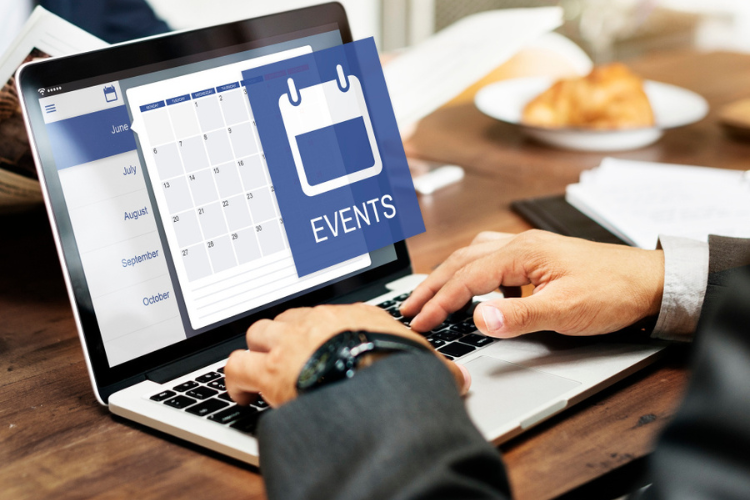Table Of Contents
- Why Pop-Ups Work During Seasonal Highs
- Turning Experiences Into Brand Equity
- How To Plan A Pop-Up Events For Seasonal Campaigns?
- 1. Choose Your Location Wisely
- 2. Use Seasonal Trends
- 3. Create A Real Experience
- 4. Encourage Sharing
- 5. Partner Strategically
- 6. Offer Different Payment Options
- 7. Prepare The Staff
- From Seasonal Flash To Year-Round Strategy
Leveraging Pop-Up Events for Seasonal Campaigns
Ads are everywhere. Honestly, most of us scroll past them without even noticing anymore. So if you’re a brand trying to stand out—especially during those busy seasons—you’ve gotta do something that actually grabs attention. That’s where pop-ups come in.
Not the online kind, but real, physical pop-up events. Quick little setups where people can experience your brand in the moment. No long-term lease, just a burst of energy and presence right when it matters.
And during events for seasonal campaigns, like the holidays or a summer rush? Timing’s already on your side. People are out, they’re spending, they’re curious. That’s your sweet spot.
Why Pop-Ups Work During Seasonal Highs
Something happens when the season changes. You know the feeling—people are out shopping more, the mood shifts, there’s a buzz in the air. That energy? Pop-up events ride that wave perfectly. They catch folks when they’re already in a “let’s go see what’s happening” kind of mood.
Another thing: they’re not tied down. You can set them up pretty much anywhere—farmer’s markets, local fairs, even just a busy corner downtown. The freedom to move means you can show up right where your crowd is hanging out. No need to wait for them to find you.
Plus, the “limited time only” vibe? That works. People see something that won’t be there next week, and boom—they’re in. They wanna check it out, snap some pics, maybe even tell their friends. That buzz spreads fast, especially if the event has something fun or unexpected going on.
Turning Experiences Into Brand Equity
The coolest part about pop-ups? It’s not just about showing off your product—it’s about letting people feel what your brand is all about, not in a cheesy, salesy way, but through real moments.
Think of a hot chocolate booth from a skincare brand during a chilly December weekend—cozy, friendly, low-key. Or a glass box truck, serving drinks at a beach event with games, music, and free samples. It’s not complicated, but it sticks. People remember the feeling, not just the logo.
And when they do post about it—photos, stories, random shoutouts on TikTok—you’ve suddenly got eyes on you from way beyond that one event. That kind of reach is gold, especially when it feels genuine.
How To Plan A Pop-Up Events For Seasonal Campaigns?
You don’t need a huge budget to pull one off, but you do need a plan. A good one. Here’s what helps:
1. Choose Your Location Wisely
Don’t just chase foot traffic. Ask yourself: where are your people hanging out this season? Go there. Be part of that space.
Depending on what you want to achieve, you have to choose the location. Different locations can come up with different outcomes. You have to consider different factors like target audience, accessibility, and the leasing cost.
So, it is best if you choose a location that is a popular hangout spot or downtown to attract new customers.
2. Use Seasonal Trends
Use the festivities when you are thinking of the theme for your pop-up events for seasonal campaigns. Important dates like the Independence Day celebration or Christmas are effective in drawing more people and creating a buzz around the pop-up.
Consumers often respond to discounts, promotional offers, and themed services and products. This creates a sense of urgency and encourages customers to buy their products.
3. Create A Real Experience
Don’t just show up with a banner and some freebies. Make it fun. Or weird. Or helpful. Anything that makes someone stay for more than 30 seconds.
Apart from choosing the best date to set up the store, the design of the stall is also important. If you have the budget, you can try experimental marketing to provide them a different kind of experience.
This will not just create a buzz, but it can make a different kind of shopping experience for the customers.
4. Encourage Sharing
Give people a reason to pull out their phones. A cool setup, a funny sign, something surprising—it doesn’t need to be fancy, just photo-worthy.
This way, you will be able to share your store through them. Ask them to tag your store or use a special hashtag when they post about it. Also, you can start a contest and declare a prize for a lucky customer.
5. Partner Strategically
Two brands are better than one if there’s a natural overlap. Even teaming up with a local artist or food vendor can make it more interesting.
This will help you reach out to a wider set of audience as you will be exposed to their audience as well. Partner with someone or a brand who is popular locally, and you will be able to piggyback on their campaign as well.
6. Offer Different Payment Options
Depending on the target audience, every customer can choose a different payment method. Mostly, the older demographic will prefer paying with cash, and the young ones mostly prefer cashless payment methods.
Well, it can be the opposite as well. Whatever it is, you should keep various payment options to make it easy for customers to buy what they like.
7. Prepare The Staff
During the pop-up event, the crowd might get bigger than on any other day. Train your staff so they can manage a large crowd before the event begins.
Moreover, you can also have an emergency plan and coordinate with the local police to make sure of everyone’s safety.
With a trained set of staff, the pop-up event will be more organized and create a positive experience for the customers.
From Seasonal Flash To Year-Round Strategy
Now sure, pop-up events for seasonal campaigns really shine when the timing’s right—like back-to-school, summer break, gift-giving season, all that. But honestly? You can run them any time.
Try out new neighborhoods, test a product, just see what people think. It’s low-risk and way more human than another email blast.
In the end, if you do it right, a pop-up doesn’t just create short-term hype. It builds real connections. It gives people a reason to remember your brand—and maybe even talk about it after the booth’s gone and the season’s over.
Read Also:














